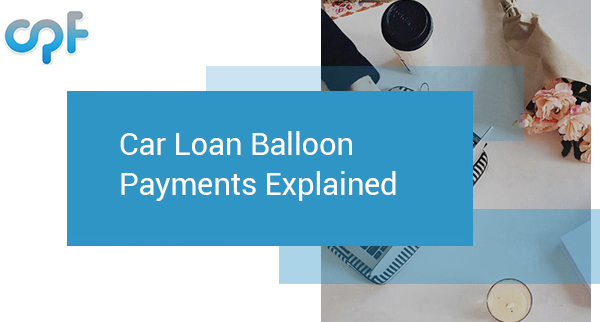When looking for a new car or commercial vehicle for your business, you’ll often be faced with the choice of financing the purchase. Vehicles come with an expensive upfront cost, so it usually makes sense from a cash flow perspective to spread the cost out over a few years. Loan repayments can also get expensive, so if you want to reduce your regular repayments over the life of the loan, you’ll need to make use of what is known as a ‘balloon payment’, or very similarly, a residual value.
“Your car loan’s balloon payment can make a significant difference to your ongoing repayments.”
The inclusion and size of your car loan’s balloon payment can make a significant difference to your repayments as well as the amount you’ll be left owing at the end of the financing period. Knowing this, it pays to really understand what you’re getting yourself and your business into, so that balloon payments can work for you, not against you. Let’s take a look at the nitty-gritty when it comes to car or commercial vehicle finance, repayments and making sure your balloons are more akin to a joyous party than an unwanted surprise.
What is a balloon payment?
A balloon payment is a one-time payment due to your lender at the end of your car loan term. Usually, it’s calculated based off the final value of your vehicle at the end of the loan, and it might be agreed on as a dollar value, or a set percentage of the amount you borrowed. Essentially the use of a balloon payment allows you to repay only a part of the principal of your loan during the repayment period (reducing the monthly repayment amounts). In exchange, you’ll owe the lender more at the end of the loan.
How exactly does it work?
A balloon payment is relatively easy to understand and calculate. To demonstrate, let’s look at a simple example:
Your business buys a new fleet, borrowing $300,000 over four years. You want to reduce your monthly repayments over the next few years as your business is growing rapidly and you’re better off maximising your cash flow as much as possible to grow in other areas. So, you choose to have a 35% ($105,000) balloon payment on the loan. While your business will now owe this amount in four years time, your monthly repayments along the way will be approximately one-third lower than if you chose to have no balloon at all.
You can use our handy car loan calculator to determine how different balloon payments (or residual values) impact your finance deals monthly repayments.
Why might you want to have a balloon payment?
There are typically four main benefits from making use of a balloon payment when sorting out your car loan:
- You lower your loan repayments. This makes it easier to fit in with your business’s monthly budget and other commitments.
- Frees up your cash. Since you are deferring payment for part of the total loan amount, you’ll have more money to invest elsewhere in your business.
- Flexibility. You have time to save up for the balloon payment, as well as the choice to sell your car privately, rather than trading it in.
- Choice. Your business can often choose to upgrade your vehicle at the end of the loan and carry forward (refinance) your balloon payment.
A balloon payment is not for everyone, but it makes sense for many businesses and commercial ventures looking to maximise their cash flow and leverage the power of financing to structure a deal that suits them.
Why you might want to avoid one
To make a fair decision, you need to take into account the potential drawbacks. After all, we don’t want the balloons to pop.
- The cost is higher. The flexibility of a balloon payment doesn’t come for free. You’re effectively borrowing more money for longer, so consider how a larger balloon will impact the total cost of the loan. Also, don’t forget you will have to meet the lump sum when it’s due!
- Refinancing may be difficult. In theory, refinancing a car loan is feasible; in practice, it may not be. You don’t know where your business will be in a few years time, so don’t rely on the assumption you’ll be able to secure another loan automatically.
- Limitations. The size of your balloon payment is influenced by the age of your vehicle, the make, the model, the type of loan and the assumed rate of depreciation. Some vehicles are better off with a balloon, and some are not – see which works best for you.
When used correctly with your circumstances taken into account, balloon payments are a very useful tool. Just make sure to consider both sides of the equation and consult an experienced expert so you can have your cake and eat it too.
Whether your business is looking to secure a new vehicle, refinance an existing loan or simply discuss your business’s finance options, Capital Plus Finance is an experienced finance broker that has your best interests at heart. The team at Capital Plus Finance will do everything we can to help you secure a suitable finance solution for your small business. Please give us a call anytime to find out more or to have an obligation-free chat about your business’s funding situation.





